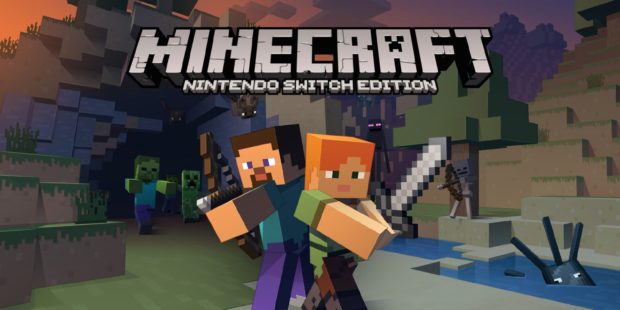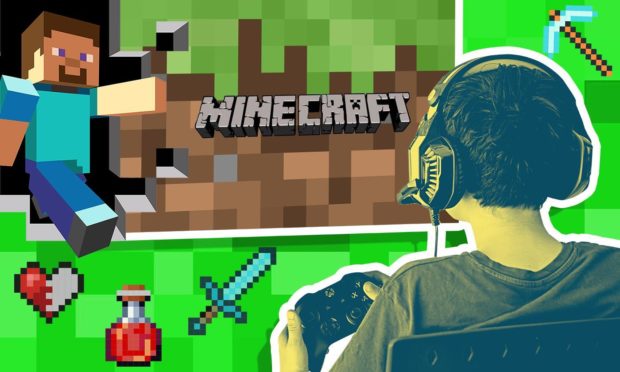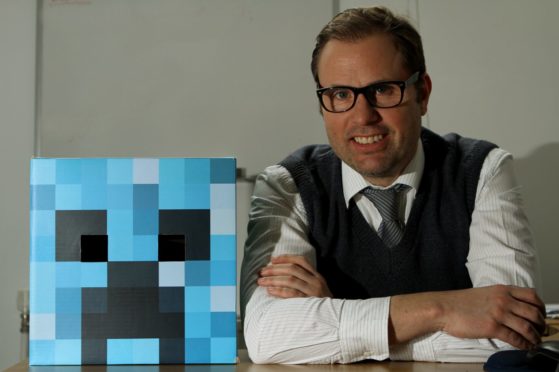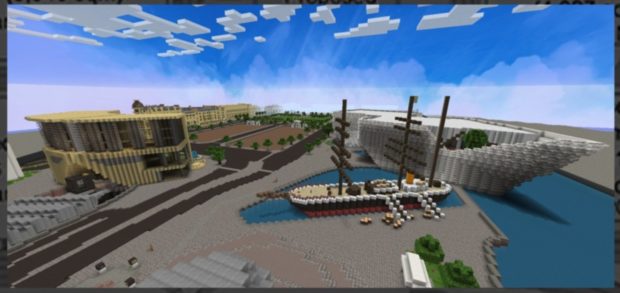How much time children spend playing video games is a divisive topic. In this series, we explore the pros and cons of the gaming world. This week, an education expect says video games like Minecraft can play an important role in schools.
When Derek Robertson wheeled the TV into his Dundee classroom he was amazed to see pupils respond to complex math scenarios on their gaming console.
The boys, in his P6 class, were in the lowest ability maths group and had struggled with problem solving.
But on the last day of term before the Christmas holidays, his eyes were opened to a new way of helping children learn through gaming.
That serendipitous moment around 20 years ago has shaped his career since as a lecturer at Dundee University and government advisor.
“I looked at these three boys and in that moment it was like my eyes were wide shut,” he said. “I had lazily thought they weren’t clever – the fault was with them and I never considered that it was me, the school or the textbooks.”
He established Learning and Teaching Scotland’s Consolarium initiative, based in the city, which explored how valuable the video game would could be in an education setting.
A key project saw Kirkton pupils take on a 3DS game called Dr Kawashima’s Brain Training which tasked players to complete math sums as quickly as they could.
Will video games in school help with learning and engagement?
The children made major improvements in their numeracy skills while gaining enjoyment for the process.
Derek explained: “The kids would do the Nintendo DS as a soft start project first thing in the morning and then they would do a brain age check at the end of the week.
“The teachers we worked with spoke about children willingly taking home additional work on times tables because they were intrinsically motivated to get better at the game.
“It was situated in that culture that they enjoyed and it seemed to have an added incentive for them to want to improve.”
Computer games, however, do not have to have explicit educational undertones in order to be beneficial in the classroom, Derek says.

Games such as Nintendogs, and more recently, Minecraft, became staples in all aspects of education.
They created a world of imagination for pupils to immerse themselves in and their teacher could plan lessons away from screens around what they had learned.
That could include lessons from budgeting for their pets’ needs or nurturing animals to writing or design tasks around their pets.
Now Minecraft is taking over and allowing teachers to explore creative design challenges that let pupils explore their imagination.
Where lessons are centred around medieval castles or the Titanic pupils can enter the digital space to showcase how they interpret it.
Dundee pupils showcased their talents in 2015 by creating their own visions for how the city’s waterfront should look.
Derek began teaching an elective in Minecraft again during the lockdown last year as digital learning became the norm.
He said: “Games like Minecraft promote a self-regulation of learning. They know how to self-improve. They go to things they like to learn how to do things.
“When they want to get better at something, they are demonstrating the ability that they know how to do it. When they do that, they build the most amazing things.
“Imagine situating learning in world such as Minecraft which then we can bring in, as we did with Nintendogs, a whole host of curricular objectives that are within that culture.
People see things like Minecraft as youth culture but if we opened our eyes we could see the richness and the potential of what’s happening in these spaces.”
“I find it incredible that we’re not tapping into that domain more than we currently are.”
However, encouraging children to play games in the classroom constantly has to be justified, Derek said.
“There are long established norms and expectations of what school and learning is and what people should be doing at school.
“There was always an element of shock at the idea of kids playing Nintendogs in school, you had to justify it regularly.
“People see things like Minecraft as youth culture but if we opened our eyes we could see the richness and the potential of what’s happening in these spaces.”
On Tuesday: As a Perthshire parent worries her teenage son spends too much time on his Xbox, a digital expert will discuss how to spot the signs of a gaming addiction and whether too much gaming is as big of a concern as we think.












